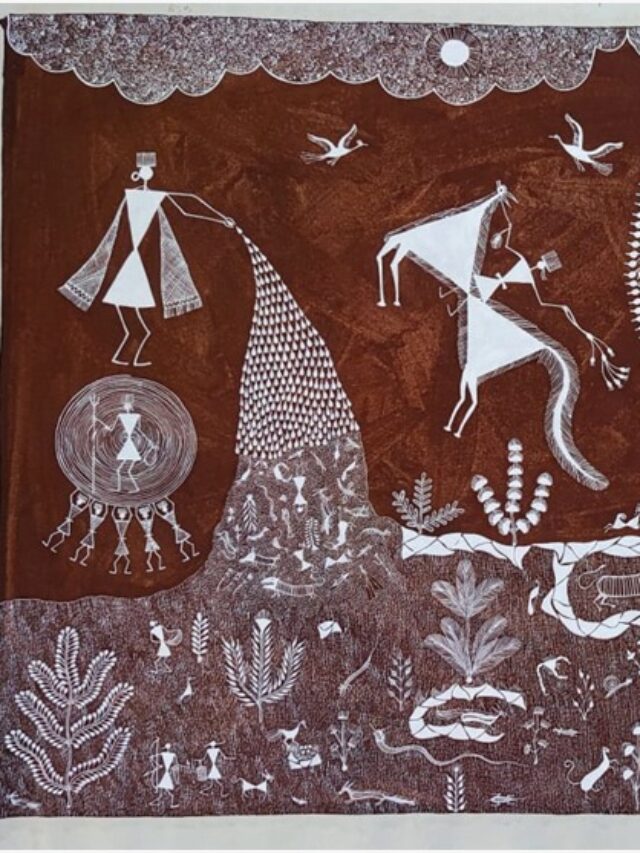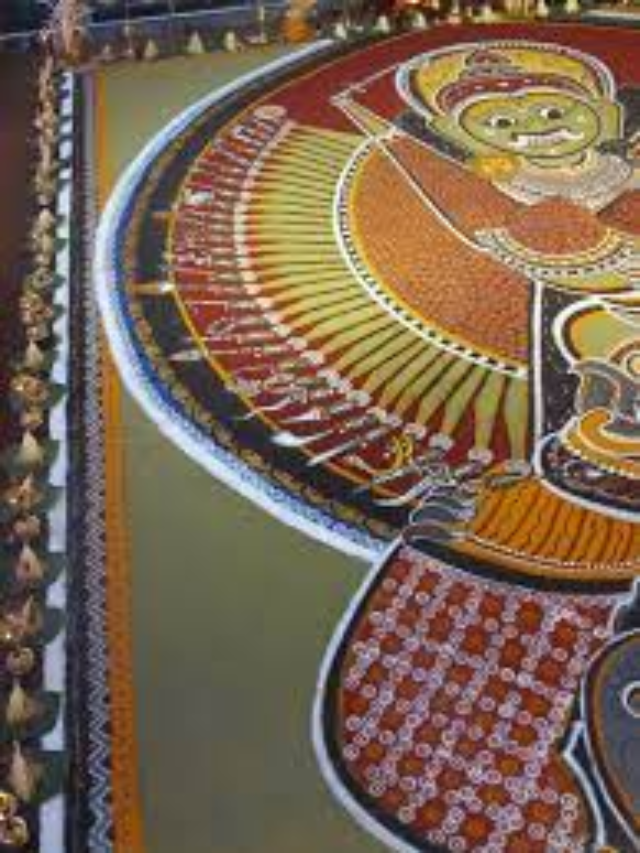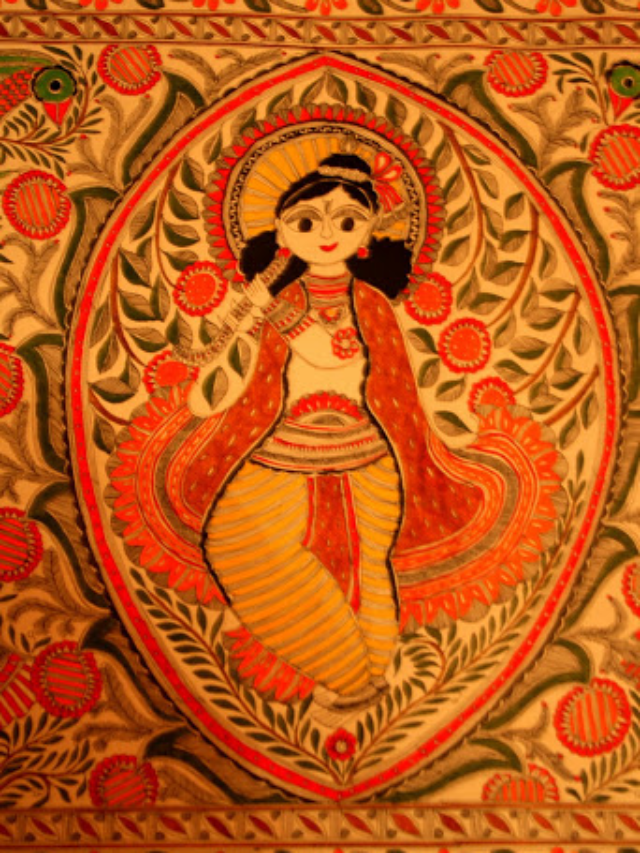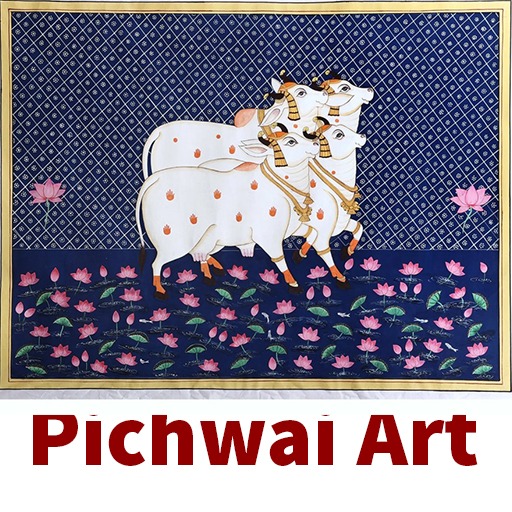What is Pichwai Art? India’s traditional art and culture are well-known throughout the world. There are numerous folk arts and crafts on the Indian Subcontinent. The fascinating art of Pichwai from Nathdwara in Rajasthan is one such example. In the Indian state of Rajasthan, Nathdwara is a famous town in the district area. Nathdwara has followers from all over the world and is well-known worldwide. The devotees’ attention is captivated by Pichwai right away.
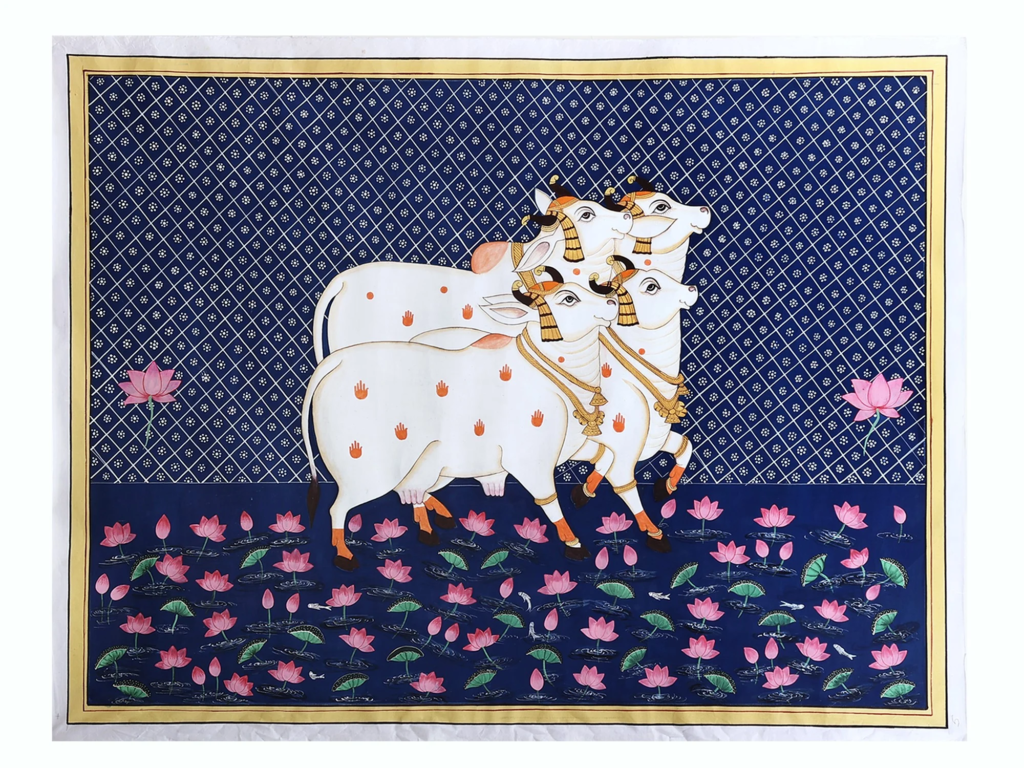

Folk Art of Rajasthan:
Indian painters, printers, and dyers have a nearly 5k year history of embellishing textiles through weaving, painting, printing, and dying. The brilliant and colorful pigment painted textiles of India portray scenes and figures from the Puranas. Andhra Pradesh, Rajasthan, West Bengal, Odisha, and Gujarat are the states where they are most commonly practiced. Pichwai art has recently gained popularity among other colorful painted fabrics. Pichwai art was initially used just to decorate buildings and residences as ceiling canopies. Artisans are increasingly incorporating these motifs into shawls, and sarees.
Beginning of Pichwai Art:
Shrinathji’s temple background is painted to provide a pleasant appearance to the surroundings. Shrinathji’s figurines include other significant components from his life, such as cows and other animals. This 400-year-old stunningly gorgeous art form mostly depicts Shrinathji, Lord Krishna’s Child Avatar, with each story tailored to a specific season or occasion.
24 Boxes:
Swaroop’s are the twenty-four boxes that surround a standard Pichwai. Each one has a Gopis, Krishna, and other figures. Shrinathji’s intricate Shringar is mesmerizing. Pichwai is bustling with activity, but it doesn’t feel overcrowded. Pichwai art is a perfect illustration of aesthetic harmony and elegance, despite the presence of many figurines and accessories. The Pichwai’s characteristics are its vibrant colors. The use of brilliant different shades on fabric or paper creates a sense of romanticism that speaks for itself.
Techniques:
The colors were applied by heavily starching the fabric. On a white or black background, these drawings were frequently outlined. The relevant backgrounds were created with zinc white and charcoal. Plant materials such as lapis lazuli, copper acetate, lamp black, and indigo, were used to create the hues. For finer outlines, the brush for painting was made of squirrel hair and goat hair.
Process of Making:
When we observe the details and the size of Pichwai, we can see that it takes a long time to become what it is. A handmade Pichwai might take several weeks or even months to make. Pichwai was painted on cotton fabric. After that, the artists would draw the art on the cloth. Then started the design of the decorative and lovely graphics. After that, the pictures were prepared to be painted with natural and organic hues, paints, and even an organic paintbrush. Coal, gold, zinc, silver, and other natural sources were used to create these colors. With vivid colors with handmade blocks, The Pichwai is dominated by bright and strong colors such as yellow, red, and green.
Pichwai Art Now:
With the hard work of numerous artists and organizations who want to maintain and refresh this unique craft, the 17th-century painting technique has restored its reputation and is undergoing a revival. To keep Pichwai meaningful in today’s world, the artist has modernized the form of art while maintaining its original charm. Pichwai might have been huge since they were hanging behind the deity, but as time went on, the area of the paintings decreased. Furthermore, the colors are no longer entirely natural.
Art on Wall:
Artists now utilize artificial or a mixture of synthetic organic colors due to money and time limits, as well as the lack of natural colors. In addition, instead of cotton cloth, paper is being used. Pichwai art is now accepted everywhere. Pichwai art is now placed on walls and buildings and other places due to their beauty. As a result, artists are now creating smaller artworks that are more appropriate for today’s smaller houses.
Art on Fabric:
In several ways, the technique of painting on fabric with veggie dyes and mineral compounds is special. Clothing designers and home decorating firms have appreciated this creative form. It has spread beyond the walls of temples and buildings to our clothes as well. This is a step toward instilling aesthetic knowledge in people’s brains, as well as a tool to comprehend India’s numerous folk and tribal traditions.
For more posts like this visit Tribal Handcrafts blog.
